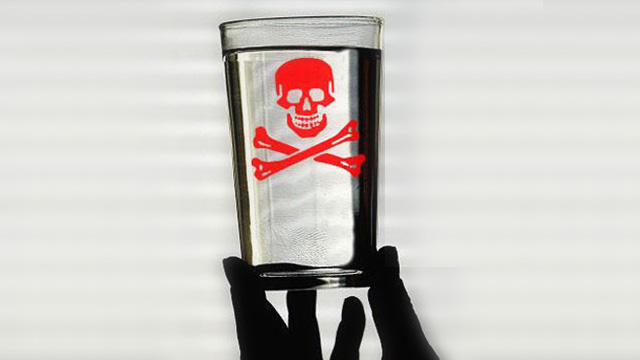Fluorinated chemicals found in microwave popcorn bags
04/03/2019 / By David Gutierrez

Think twice before you reach for a bag of microwave popcorn, even if it does promise to be organic or non-GMO. The bags that microwave popcorn comes in are coated with fluorinated chemicals linked to a laundry list of health problems even at very low concentrations. These chemicals can enter your body via ingestion or inhalation, both of which are likely if you make and consume a bag of microwave popcorn.
Fluoride is a neurotoxin that has also been linked to cancer, bone disorders, depression, attention deficit hyperactivity disorder (ADHD), thyroid dysfunction and other hormonal disruption. The form of fluoride found in microwave popcorn bag liners is a class of chemicals known as fluorotelomers. Companies use these chemicals to protect the paper bags from degrading when they come into contact with hot oil. Although alternatives such as wax are available, none resist heat as well as flurotelomers.
But studies have found that even during normal usage, the fluorotelomers in microwave popcorn bags break down into the chemicals PFOA and PFOS. PFOA and PFOS are in the larger family of chemicals known as perfluorinated compounds (PFCs), or “Teflon chemicals.”
Toxic Teflon
What’s so scary about PFCs? A lot, it turns out. The chemicals have been linked to adverse health effects including hormone disruption, thyroid dysfunction, cancer, birth defects, lowered birth weight, liver inflammation, weakened immune function, elevated LDL (“bad”) cholesterol, premature menopause, arthritis, heart disease and stroke. They can produce these effects at blood concentrations as low as four parts per billion.
PFCs are found in more than 200 consumer products, but the most (in)famous of these is nonstick cookware. When nonstick pans reach temperatures as low as 325 degrees, these PFC chemicals aerosolize and can kill pet birds, much like the “canary in the coal mine.” In humans, acute exposure to these inhaled chemicals can produce a syndrome known as “Teflon flu.”
Unfortunately, exposure to PFCs is ubiquitous in modern society. Additionally, since the chemicals bioaccumulate and resist degradation, nearly every human being ever tested carries them in their bodies. But that doesn’t mean there’s no point in avoiding them — on the contrary, it makes it more important than ever not to unnecessarily increase your body burden of these dangerous chemicals.
Fluoride-free alternatives
So what can you do if you’re a popcorn lover and don’t want to poison yourself every time you prepare your favorite snack? You could try to track down a microwave popcorn brand not made with PFCs, but you might have to go to Europe to find it (a Spanish company introduced one in 2015). Even then, you need to beware of other additives in the popcorn, like the toxic butter flavoring chemical diacetyl.
If a trip Europe isn’t in your budget, you can opt for a homemade alternative. All you have to do is get yourself a non-waxed paper bag, like a simple lunch bag, fill it with 1/4 cup of popcorn kernels (no oil), fold the bag over itself a few times, and microwave for two to four minutes. The bag does not need to be sealed any further; it will stay closed.
If you don’t have a bag or prefer to avoid disposables altogether, you can also make microwave popcorn in a glass bowl. Just put 1/4 cup of popcorn kernels and a tablespoon of oil into a two to three quart tempered bowl, then cover the bowl with either a microwave venting lid (preferably non-plastic) or simply a piece of parchment paper held in place by a rubber band. Microwave for two to four minutes.
Beware of electric popcorn makers, no matter what they claim to be made from. Many home appliances that contain heating elements are lined with PFCs, which are released into the air when the device is turned on.
Perhaps the simplest option is to just make your popcorn on the stove — just make sure to avoid those nonstick pans.
Sources include:
Tagged Under: Fluoride, fluorinated chemicals, fluorotelomers, microwave popcorn, PFCs, PFOA, PFOS, Teflon, toxic chemicals, toxic food, toxins


















